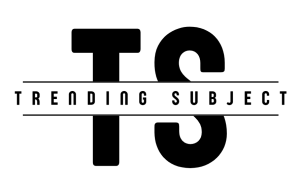Inflation in the United States unexpectedly rose in February, defying expectations of a slowdown and highlighting the challenges of controlling rising prices in the economy. The Labor Department reported on Tuesday that the consumer price index (CPI) climbed 0.4% from the previous month, exceeding the 0.3% increase in January. On an annual basis, prices increased by 3.2%, slightly higher than the 3.1% seen in January.
The CPI is a broad measure of the price of everyday goods, including essentials such as gasoline, groceries, and rent. Its increase signifies the burden faced by American households, especially low-income families, as they are forced to pay more for everyday necessities. The rising cost of living has been a major concern, and the slow retreat of inflation is startling.
According to the report, the key drivers of inflation in February were housing and gasoline costs, contributing to over 60% of the total monthly increase. Rent prices rose by 0.4% in the month and have witnessed a staggering 5.8% increase from the previous year.
Similarly, gasoline prices surged by 3.8%, although they remain 3.9% lower compared to last year. These numbers are a reminder that inflation remains significantly high, and its impact on household budgets cannot be overlooked.
Another major concern for Americans is the cost of food, which remained unchanged in February but has increased by 1% compared to the same time last year. This is a cause for concern for many households, as it directly affects their ability to afford basic necessities. Moreover, the price of airline tickets and car insurance also saw a notable increase in February, adding to the overall pressure on household budgets.
The persistently high inflation rates have caught the attention of the Federal Reserve, which has a target of 2% inflation. While there has been a considerable decline from the peak of 9.1%, inflation still remains above the desired level. This trend is particularly worrying for the central bank as it has to balance controlling inflation with spurring economic growth. Federal Reserve Chair Jerome Powell, in his testimony to Congress last week, acknowledged the challenge of taming inflation but stated that the Fed will continue to monitor the situation closely.
The news of unexpectedly high inflation had a positive impact on stock futures, with markets interpreting it as evidence of an economy that is continuing to grow. However, the real concern is how this will affect the future of interest rates. The Federal Reserve has indicated that it will not cut interest rates until it is confident that inflation is under control. The current market pricing predicts the first interest rate cut to happen in June, according to the CME Group’s FedWatch tool.
Market experts are divided on the potential impact of the unexpectedly high inflation reading. Some believe that it may support the argument of “sticky inflation,” where prices remain elevated despite the economic slowdown, thus calling for immediate rate cuts. However, others caution against jumping to conclusions and point out that “sticky” does not necessarily mean “overheating.” The Fed’s stance remains unchanged, with a plan to cut interest rates in the latter half of the year unless the situation demands otherwise.
In conclusion, February’s inflation report has raised concerns about the inability to control rising prices in the economy. The unexpected rise in inflation, driven by housing and gasoline costs, underscores the difficult task faced by policymakers in balancing inflation and economic growth.
The impact on American households, particularly low-income families, cannot be ignored as they struggle to cope with the rising cost of living. The Fed will continue to monitor the situation closely and make decisions based on data and economic indicators, providing much-needed stability to the market.








